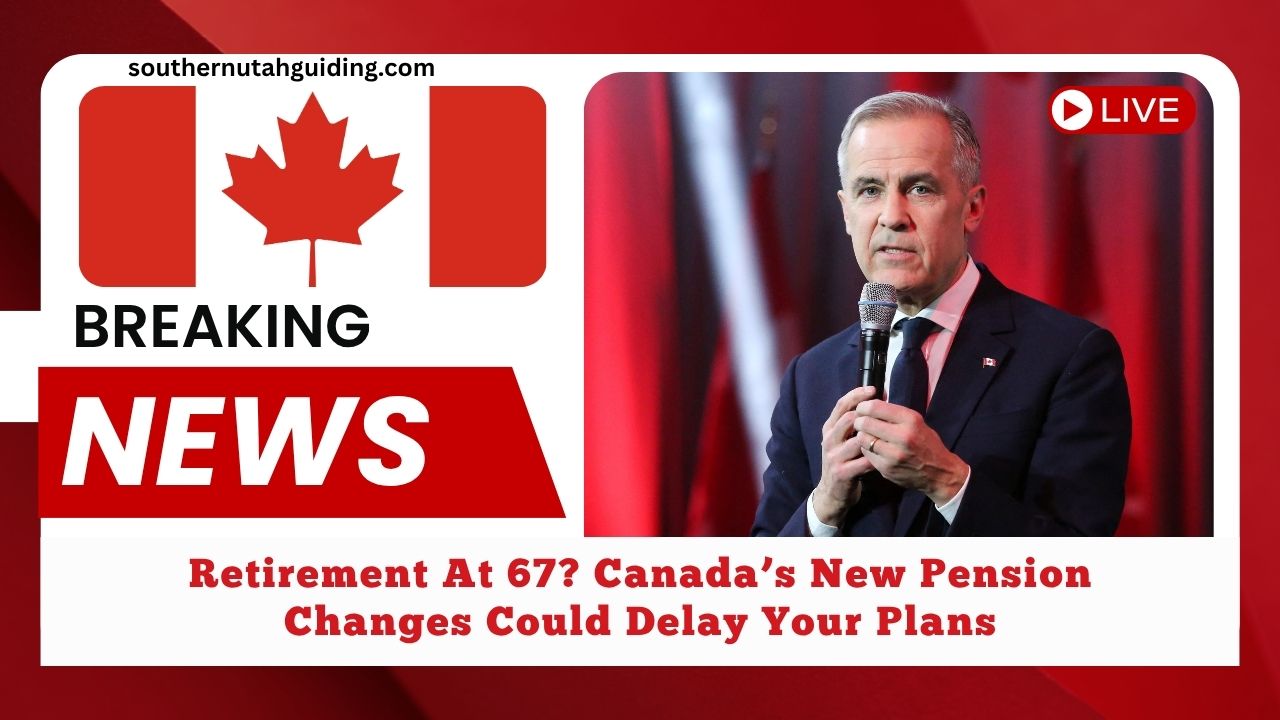As Canada’s population ages and inflation continues to stretch household budgets, the federal government is considering significant pension reform—including the possibility of raising the official retirement age to 67.
With the future of Canada Pension Plan (CPP) and Old Age Security (OAS) under pressure, Canadians must now prepare for a retirement landscape that looks very different from what they were promised.
These potential changes aim to ensure long-term sustainability, but not everyone is on board. Here’s what’s being proposed, why it’s happening now, and how it could impact your financial future.
Why Is Canada Rethinking Retirement in 2025?
A combination of economic and demographic shifts is pushing the government to consider raising the retirement age and altering pension withdrawal rules:
| Pressure Point | Details |
|---|---|
| Aging Population | Over 20% of Canadians will be 65+ by 2030 |
| Longer Life Expectancy | Canadians now live longer, drawing benefits for more years |
| Inflation and Costs | Rising expenses in housing, groceries, and healthcare |
| Fewer Workers per Retiree | CPP and OAS funding models rely on contributions from working Canadians |
To avoid a financial shortfall in public pension programs, federal and provincial leaders are examining ways to make the system more flexible and financially viable.
What Are the Proposed Pension Changes?
Here’s a breakdown of the pension reform proposals being considered as of mid-2025:
| Policy Proposal | Current Status | Proposed Change | Who’s Affected |
|---|---|---|---|
| Retirement Age | 65 | Gradual increase to 67 by 2030 | All workers under age 60 |
| Partial Pension Withdrawal | From age 60 | More flexible with part-time work | Early retirees |
| CPP Contributions | Flat rate | Higher rates for high-income earners | Upper-income Canadians |
| Deferral Incentives | Optional small bonus | Larger rewards for delaying CPP | Seniors delaying retirement |
| Tax Credits for Workers 65+ | Limited access | Expanded eligibility | Older adults still in the workforce |
The focus is on gradual change, rewarding work beyond 65, and offering choices for those unable to delay retirement due to physical limitations or income needs.
How Will These Changes Affect You?
The impact of these pension reforms will vary depending on your age and income:
If You’re Aged 60–64:
- You may need to wait until age 67 for full benefits.
- However, early withdrawal options could still be available with reduced payments.
If You’re Already Retired:
- No changes to current payments (for now).
- Future indexing or bonus adjustments may affect your benefits.
If You’re Under 50:
- Expect to retire closer to age 67.
- You may pay higher CPP contributions during your working years, especially if you earn above the national average.
These changes could be particularly challenging for Canadians in physically demanding jobs, such as trades, agriculture, or healthcare.
Public Reaction: Divided Views Across Canada
Public opinion is sharply split:
- Urban professionals often support the idea, seeing it as a pragmatic adjustment in response to longer lifespans.
- In contrast, blue-collar workers, farmers, and rural residents argue the change is unfair, especially for those unable to work past 65.
Advocacy groups like CARP (Canadian Association of Retired Persons) have criticized the move, warning that it could financially burden vulnerable seniors and widen the gap between economic classes in retirement.
Will There Be a Compromise?
A hybrid solution seems most likely. Experts predict:
- Gradual age increases for younger workers
- Flexible withdrawal options for workers in physically demanding jobs
- Enhanced bonuses for delaying retirement
- New tax incentives for working seniors
This approach could balance sustainability with fairness, avoiding a one-size-fits-all policy.
What Should Canadians Do Now?
Even though final decisions are pending, Canadians should proactively plan for a potentially delayed retirement age.
Here’s what you can do:
- Review your pension forecast
Log into your My Service Canada Account to see your projected CPP and OAS benefits. - Save more if possible
Increase contributions to RRSPs and TFSAs to build flexibility in your retirement timeline. - Stay informed
Follow updates from the CRA and government briefings on retirement reform. - Seek professional guidance
A certified financial planner can help you navigate the changes and optimize your income sources.
Why Now? The Urgent Need for Reform
If left unchanged, the current pension structure may become unsustainable as more Canadians retire and fewer workers pay into the system. The government believes that extending the working age and encouraging delayed retirement will help maintain the long-term solvency of CPP and OAS.
However, the social cost is real—especially for Canadians unable to extend their careers due to health issues or job type. A truly equitable reform must account for these disparities.
Canada’s retirement system is evolving, and while the proposed pension reforms may seem distant, their impact could be profound—especially for younger and mid-career workers.
By understanding the potential shift to age 67, taking steps to strengthen your personal savings, and staying informed on legislative updates, you can maintain control over your financial future.
FAQs
Will everyone be required to retire at 67?
No. While gradual increases are proposed, early retirement (with reduced benefits) will still be an option in most cases.
Will this affect my CPP and OAS payments if I’m already retired?
No. If you’re already receiving benefits, your current payments are not affected by these proposals.
When will these changes take effect?
If implemented, the retirement age increase would begin in 2026, with full transition to age 67 by 2030.

